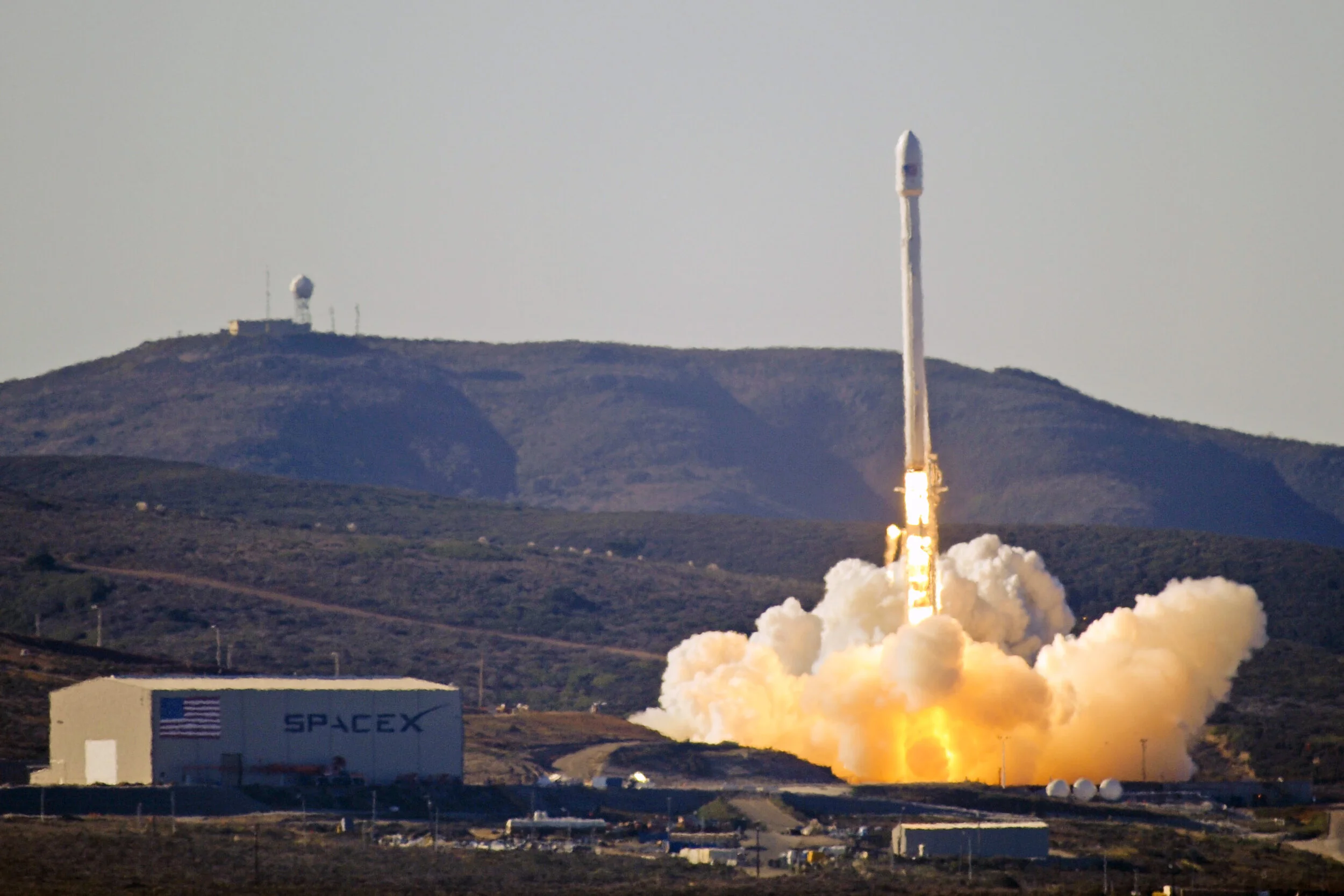The NASA and SpaceX Launch: Reigniting the Dream of Space
On Saturday May 30th, SpaceX launched the Falcon 9 rocket with the Crew Dragon Spacecraft to the International Space Station (ISS). The project was executed in conjunction with NASA, which provided SpaceX 2.6 billion dollars in funding for the launch (O'Callaghan). The event was seen as a proud moment for Americans across the nation for two reasons. The first being that the United States has fallen behind in the “Space Race” since the last NASA shuttle launch in July of 2011 when theAtlantis shuttle took off from the Kennedy Space Center with supplies for the ISS (Dunbar). The second was the innovations that have been made in the aerospace industry and the exciting work being done at the ISS.
Elon Musk, owner of SpaceX, has been breaking barriers in several industries. The world knows of his advancements in electric cars and transportation with Tesla and Hyperloop. Of course, he also has pushed limits in prosthetics with Neuralink, artificial intelligence with OpenAI, and solar power with Solar City. However, Musk took his achievements a step further and revolutionized space travel. The Falcon 9’s unique design allows for the rocket to be reused for multiple flights, therefore driving down the cost of space travel. Although the exact cost of the Falcon 9 is unknown, 40-50 million dollars would be a reasonable estimate. This does not include the cost of the fuel required to launch the rocket into space. Since Falcon 9 is reusable, SpaceX will not have to spend an additional 40-50 million dollars for a new rocket. They will be able to spend closer to 5-10 million making repairs to get the rocket ready for the next flight. Falcon 9 stands tall at 70 meters (229.6 ft) and weighs a spectacular 549,054 kg (~1.2 million lbs). It comprises two stages. The first one uses nine of SpaceX’s Merlin Engines (Falcon 9). These engines are part of the magic of the Falcon 9. After Stage 1 has completed its role, these Merlin engines are what guide Stage 1 safely back to the ground. However, the return trip is just as spectacular as the flight. Stage 1 is programmed to autonomously land on an Autonomous Spaceport Drone Ship (ASDS). These are autonomous barges that Musk has built or has contracted others to build for him (Wikipedia). The most recent launch used the barge names Of Course I Still Love You (OCISLY), and the landing was a complete success. Another amazing feature built into the shuttle is the Crew Dragon’s emergency abort system. Crew Dragon is where the crew sits. The entire space shuttle is a car and Crew Dragon is the seats in the car and Falcon 9 is an oversized fuel tank. In case Falcon 9, Crew Dragon, the astronauts, or the control center sense that the occupants of Crew Dragon are in danger, the emergency abort system is activated. In this system, Crew Dragon’s eight abort engines will rocket the vessel a minimum of 25 miles away from Falcon 9 and then use the installed parachute to safely land (CBS News). This helps insure the safety of the astronauts in case there is any issue in the combustion of the fuel in the Falcon 9 rocket.
In the mix of all that happened in a single day it is easy to miss the bigger picture. The use of reusable rockets and autonomous docking, reentry, and abort protocols have greatly increased the safety and feasibility of space travel, and thanks to Elon and researchers at SpaceX, it is fair to say that there are still numerous other innovations that will come about because of their contributions.
In recent years, especially after the US stopped sending astronauts to the ISS, the media has turned their attention away from the cutting-edge research that is being conducted aboard the ISS. On NASA’s website, there is an article released summarizing a given week's advancements. For the week of June 1st, NASA highlighted research centered around Electrolytic Gas Evolution Under Microgravity. The motivation for the research is to understand how gravity affects the evolution of electrolytic gasses. This is critical because the electrolysis procedure being studied could be used in microfluidic devices to help create O2 in spacecrafts and future human habitations on the Moon and other planets beyond (Johnson). However, a more “down to earth” application of this research involved improving drug deliveries through skin patches (Zhifei Ge).
The SpaceX launch was incredible to witness, and it marks a historic moment in US history. With NASA’s space program being shut down in 2011, privatizing and relaunching spacecrafts from American soil puts us back in the never-ending space race with our fellow countries. However, it is equally important to remember the incredible research that is being conducted aboard the ISS and the joint effort between competing countries to not only improve life back on planet earth, but to also open the possibilities to exploring the stars. Elon Musk summarized the launch appropriately when he said it was to, “Reignite the Dream of Space”. With this launch, hopefully a new generation of aerospace engineers will be inspired to take us past the Moon or Mars to new galaxies and make that dream of space a reality.
Works Cited:
“Autonomous Spaceport Drone Ship.” Wikipedia, Wikimedia Foundation, 9 June 2020, en.wikipedia.org/wiki/Autonomous_spaceport_drone_ship..
Dunbar, Brian. “Launch and Landing.” NASA, NASA, www.nasa.gov/mission_pages/shuttle/shuttlemissions/sts135/launch/index.html.
“Falcon 9.” SpaceX, www.spacex.com/vehicles/falcon-9/.
Johnson, Michael. “Space Station Science Highlights: Week of June 1, 2020.” NASA, NASA, 5 June 2020, www.nasa.gov/mission_pages/station/research/news/space-station-science-highlights-01jun20.
O'Callaghan, Jonathan. “SpaceX Makes History With First-Ever Human Rocket Launch For NASA.” Forbes, Forbes Magazine, 1 June 2020, www.forbes.com/sites/jonathanocallaghan/2020/05/30/spacex-makes-history-with-first-ever-human-rocket-launch-for-nasa/
“SpaceX in-Flight Abort Test Sets Stage for First Piloted Crew Dragon Flight.” CBS News, CBS Interactive, www.cbsnews.com/news/spacex-readies-falcon-9-for-second-shot-at-crew-dragon-emergency-escape-test-2020-01-19/.
Zhifei Ge. “Experiment Details.” NASA, NASA, www.nasa.gov/mission_pages/station/research/experiments/explorer/Investigation.html.






